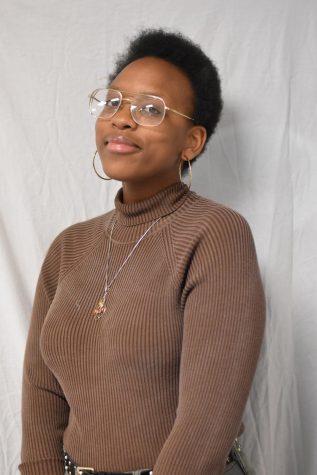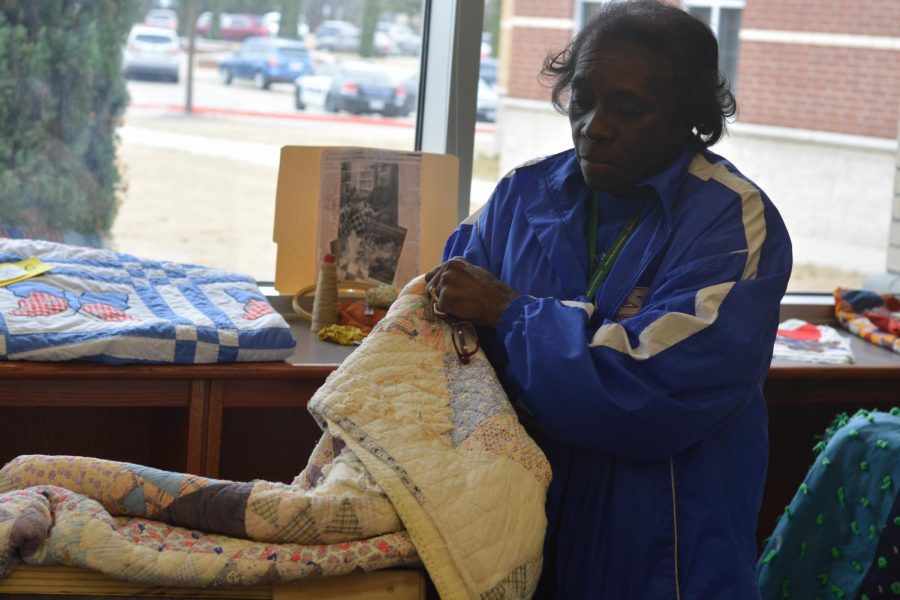Made from scratch
Legendary substitute hosts quilt display for Black History Month
One strand of thread tells a story. Quilts worth hundreds of dollars laid out in nonchalance, exuding a powerful archaic presence, captivating the room’s attention. From the soft yet firm texture on each quilt to the unique design of each patch, the blood, sweat and tears is apparent in each stitch.
“It’s crazy how one piece of fabric has hundreds of years of history and we take it for granted,” junior Nahome Hailu said.
To raise awareness for Black History Month this year, substitute Ms. Emma Stafford organized a quilt showcase from teachers and students in the media center. Quilts of all ages were on display from 75 years old to some that aren’t quite finished yet. Two thousand hours worth of sewing was encapsulated in the library Jan. 31 and Feb. 1, some even hand sewn.
“The quilts are out because students need to feel what they’ve lost: history and tradition,” Ms. Stafford said.
Tennis Coach and English Teacher Elizabeth Simmons took part in the display with her pre 1930s quilt, sewn by her grandmother at a Quilting Bee. Simmons’ grandmother, a French Canadian immigrant, used the Quilting Bee to merge into society and learn English.
“This quilt is special to me because it was given to my father when his parents died,” Mrs. Simmons said. “My father gave me the quilt last year for the simple reason that I’m his oldest child.”
Growing up, Ms. Stafford was the oldest of eight African-American children living in a two-bedroom house in Tennessee. After her father passed away, her family moved into an affluent dentist’s home where she then proceeded to live with a white family. Though living in a time of segregation, Ms. Stafford recalls playing with these children of a different race as if they were her own brothers and sisters. In fact, she hadn’t really thought about the race difference until she reached college, when Dr. Martin Luther King Jr. was assassinated.
“We didn’t know any better,” Ms. Stafford said. “Racism hadn’t crossed our minds and everybody was the same to us.”
During the time of their stay with the dentist’s family, Ms. Stafford noticed that the dentist’s wife would always give pieces of fabric to Ms. Stafford’s mother, from which she would make quilts to keep warm for the winter.
Ms. Stafford says that the history behind quilting goes beyond keeping warm. During the time of slavery in the United States, the Underground Railroad, an escape route for the enslaved, utilized the sequencing of patterns to secretly inform slaves of paths and trails to make their flee.
“History like this is important,” Hailu said. “Because our [black] people have gone through a lot and without their determination we wouldn’t be here.”
Ms. Stafford is also planning an artifact exhibit in the media center in a couple of months where she will invite students and staff to share more of their personal heirlooms.
“I was taught to always teach someone else something,” Ms. Stafford said. “Black history needs to be taught consistently because just like making a pie, if you only do it once, you start to lose the recipe.”

I’m finally a senior! Yay! I’ve done this gig for four years now, and I couldn't be more happy with where I am. Since my last name is apparently hard...




Emma Tapley Stafford • Feb 20, 2019 at 9:02 pm
Well written article. I enjoyed sharing my youthful years with you as mama had eight children to care for after
my father passed. The Wilkerson(dentist) allowed us to stay on the property not his home and later years,
gave my mama land to build her a home for the children who were still at home.
Thank you for sharing my quilting experience, You are good!
Mrs. Stafford: Wylie East Substitute teacher/Retired army instructor/Retired U.T.Knoxville,Tennessee Extension
Home Economist.Oldest of eight children.